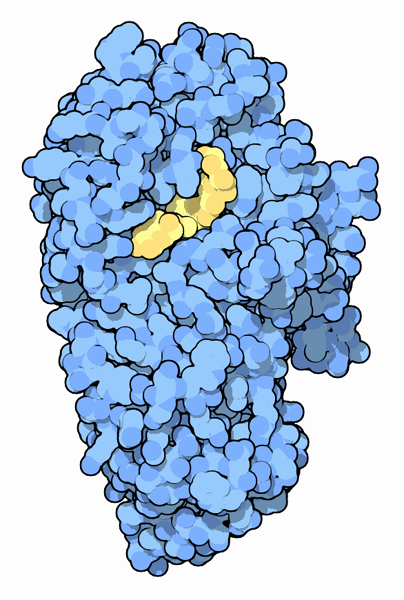|
Inhaltsübersicht | Nanomaschinen | Moleküle | Programme | Kurse | Fun | Links |
||
| > |
Alpha-Amylase

Glucose is a major source of energy in your body, but unfortunately, free glucose is relatively rare in our typical diet. Instead, glucose is locked up in many larger forms, including lactose and sucrose, where two small sugars are connected together, and long chains of glucose like starches and glycogen. One of the major jobs of digestion is to break these chains into their individual glucose units, which are then delivered by the blood to hungry cells throughout your body.
Attacking Starch
Alpha-amylase begins the process of starch digestion. It takes starch chains and breaks them into smaller pieces with two or three glucose units. Two similar types of amylase are made in your body--one is secreted in saliva, where it starts to break down starch grains as you chew, and the other is secreted by the pancreas, where it finishes its job. Then, these little pieces are broken into individual glucose units by a collection of enzymes that are tethered to the walls of the intestine.
Amylase in Action
Since amylase needs to perform its job in the unpleasant environment of the intestine, it is a small, stable enzyme resistant to unfavorable conditions. The amylase shown here (PDB entry 1ppi) is made by the pancreas in pigs. A small chain of five sugars (colored yellow) is bound in the active site, which is found in a large cleft on the enzyme. Structures for the two human enzymes (which look very similar) are available in PDB entries 1smd and 1hny. As you look through the PDB, you will also find many structures of alpha-amylases and other starch-digesting enzymes from bacteria and plants.
For more information on amylase from a genomics perspective, take a look at the Protein of the Month at the European Bioinformatics Institute.
Next: Industrial Strength
Last changed by: A.Honegger,